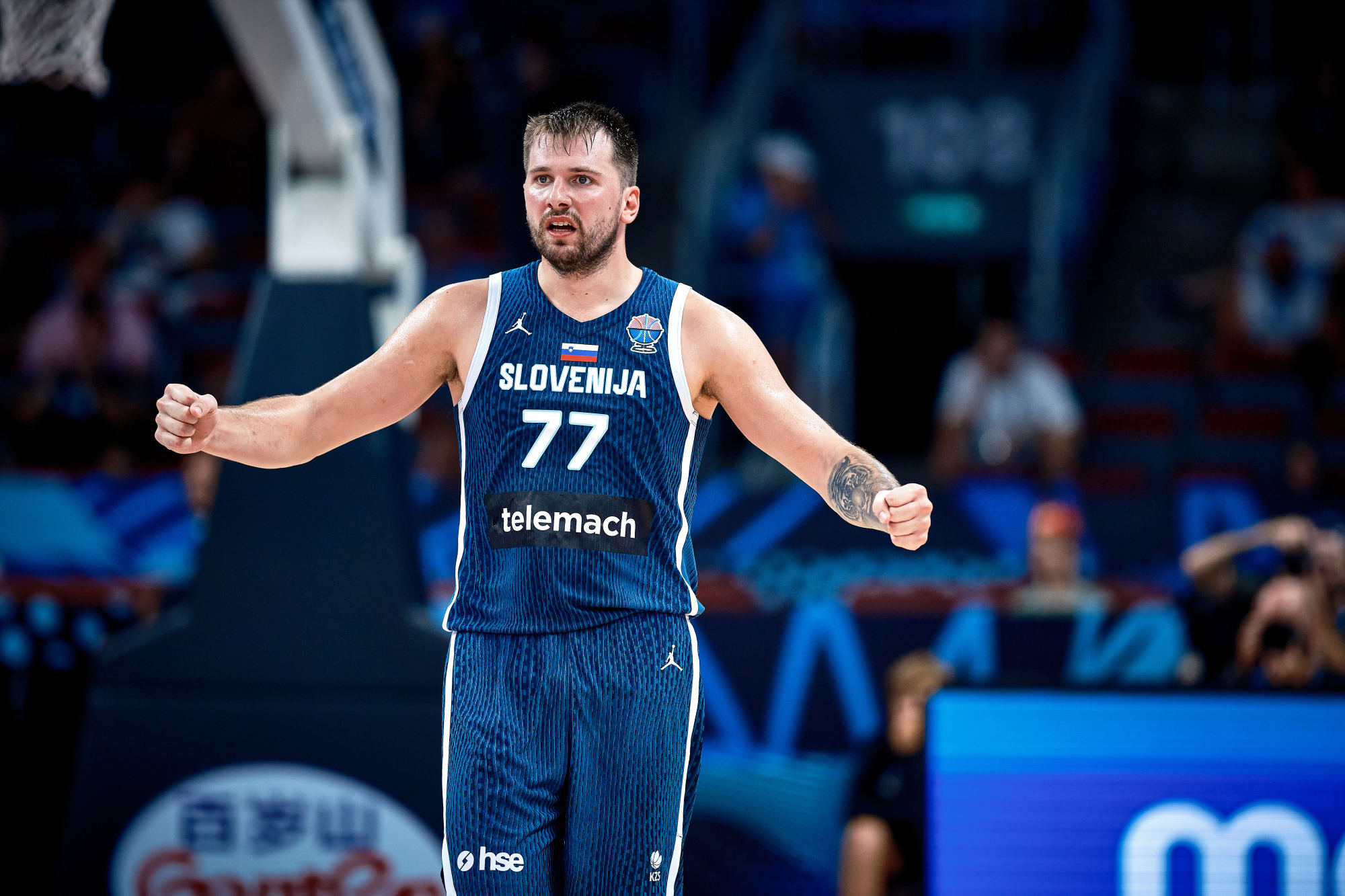- US Open final delayed until 2:30 p.m. ATP Tour
- Trump attends the US Open final as he signals readiness for second phase of sanctions against Russia CNN
- US Open 2025 live updates: Sinner vs. Alcaraz latest score after Trump met with mixed reaction – The Athletic The New York Times
- LIVE: Carlos Alcaraz vs Jannik Sinner – US Open final 2025 Al Jazeera
- U.S. Open Orders Broadcasters to Censor Reactions to Trump Bounces | Ben Rothenberg
Author: admin
-
US Open final delayed until 2:30 p.m. – ATP Tour
-

Nintendo wins a $2 million lawsuit against popular Switch modding webstore
Nintendo has just won another major battle in its longstanding war against piracy. Earlier this summer, a US federal court ruled in favor of Nintendo in a lawsuit against Ryan Daly and the Modded Hardware website. The site was known for selling devices that allowed users to get around Nintendo’s piracy protections, including the popular MIG Switch flashcart that lets buyers play official Nintendo games without the need for a physical cartridge. Besides requiring Daly to pay $2 million to Nintendo, the lawsuit requires him to shut down the website and forfeit the domain to Nintendo as part of an all-encompassing permanent injunction.
The order also prevents Daly from any future involvement with devices that get around Nintendo’s guardrails, including creating, selling, contributing to, hosting other websites related to or investing in other businesses that deal in similar products. While MIG flash carts could be used as a backup for legally purchased physical games, it was more commonly used to pirate official Nintendo Switch titles. Nintendo has steadily fought against mods and pirating tools, including recently granting itself the power to brick Switches that have pirated games on them.
Nintendo is no stranger to taking legal action against those who defy its strict policies. In March of last year, Nintendo filed a lawsuit against the makers of the Yuzu emulator. The suit was settled quickly, with the team behind the Nintendo Switch emulator agreeing to pay $2.4 million. Like the lawsuit against Daly, the team behind Yuzu had to surrender its website and permanently refrain from doing any activities that bypass Nintendo’s rules.
Continue Reading
-

Hypershell’s X Ultra Exoskeleton Is An Electric Bike For Your Legs
Hypershell X Ultra exoskeleton
Hypershell
Hypershell has announced the Hypershell X Ultra wearable exoskeleton at the IFA tech show.
The Hypershell X Ultra tops off the company’s range of exoskeletons, and features higher power motors and a lighter frame, made possible through the use of materials like titanium and carbon fiber.
There’s a good chance you may not have come across Hypershells range at all, though. Its exoskeletons use motors that sit in enclosures by the wearer’s hips to augment the movement of their own legs, and take some of the strain off their muscles. The idea is you can walk for longer, up steeper hills or even mountains. And more.
Hypershell says a charge of the battery will last up to 30km, although range drops substantially at the higher settings. Two batteries are included as standard. And the motors can generate up to a collective 1000w of force according to the company’s figures.
More electric bike than motorbike, the Hypershell Ultra X senses when a person is walking or running, then applying assistive power with each step, rather than attempting to force resting legs into movement.
“Our goal with Hypershell X Ultra is to remove physical barriers and give people the confidence to say ‘yes’ to that mountain peak, or that extra mile,” says Kelvin Sun, Hypershell CEO.
“It’s all about enabling personal achievement and ensuring the joy of adventure is open to everyone, regardless of their natural endurance.”
The Hypershell X Ultra isn’t just for on-foot activities either. It is also intended for cyclists, and uses algorithmic intelligence to determine when you are running, walking, or cycling. The Adaptive Motion Recognition mode actually goes further, with specific tweaks for walking up or downhill, down stairs or at a “race walking” pace. There are 12 contextual modes in total.
What you actually control manually, though, is the strength of the assistance, and whether to use the Eco of Hyper mode. Either can be powerful, but Hyper has a more aggressive character, encouraging you to move faster and more deliberately, while Eco lets the Hypershell X Ultra’s influence sit more invisibly under your normal walking pattern. At lower power settings, anyway.
Using the phone app, the power can be adjusted from 0 to 100, while a side button allows for changes with less finesse. A small multi-color LED indicator here also shows the battery level and the current mode.
The Hypershell X Ultra can also use its motors in the opposite way. Its fitness mode adds resistance, making your legs work more with each step. The ISO mode increases resistance as you raise your leg or move it back, an effect similar to using a resistance band.
The Hypershell X Ultra is available now direct from the company for $1999. And if that’s too steep, Hypershell’s existing range starts at $899.
Continue Reading
-
The Walking Dead: Daryl Dixon returns for Season 3 — here’s how to stream – SFGATE
- The Walking Dead: Daryl Dixon returns for Season 3 — here’s how to stream SFGATE
- ‘The Walking Dead: Daryl Dixon’: First Look at Carol and Daryl Entering Solaz del Mar (VIDEO) Rockdale Citizen
- The Walking Dead’s Daryl Dixon Fully Becomes Euro-John Wick in Over the Top Season 3 Paste Magazine
- ‘The Walking Dead: Daryl Dixon’ Season 2 Recap: What To Remember Before Daryl and Carol Head to Spain Collider
- Daryl Dixon Season 3 Episode 1 Review: Siren’s call, widow’s cove The Natural Aristocrat
Continue Reading
-

Frontline Osimertinib Plus Chemo Significantly Improves OS in EGFR-Mutated Advanced NSCLC
EGFR-Mutated Advanced NSCLC | Image by
Ashling Wahner & MJH Life Sciences Using AI
Osimertinib (Tagrisso) combined with chemotherapy led to a statistically significant and clinically meaningful overall survival (OS) improvement vs single-agent osimertinib when used as frontline treatment in patients with EGFR-mutated advanced non–small cell lung cancer (NSCLC), according to data from the phase 3 FLAURA2 trial (NCT04035486) presented during the International Association for the Study of Lung Cancer 2025 World Conference on Lung Cancer.1,2
At a median follow-up of 51.2 months (range, 0.2-60.4) for osimertinib plus chemotherapy and 51.3 months (range, 0.1-60.1) for osimertinib alone, the median OS was 47.5 months (95% CI, 41.0-not calculable) and 37.6 months (95% CI, 33.2-43.2), respectively; this translates to a 23% reduction in the risk of death (HR, 0.77; 95% CI, 0.61-0.96; P = .02).1 The 24-, 36-, and 48-month OS rates in the combination arm were 80%, 63%, and 49%, respectively; in the monotherapy arm, these respective rates were 72%, 51%, and 41%. Notably, OS benefit was observed across predefined subgroups.
“These compelling OS results from FLAURA2 confirm osimertinib-plus-chemotherapy as a first-line standard-of-care [SOC] treatment in EGFR-mutated advanced NSCLC,” David Planchard, MD, PhD, of the Department of Medical Oncology at the Institut Gustave Roussy, in Villejuif, France, and Faculty of Medicine at Université Paris-Saclay, in Paris, France, said in a presentation of the data.
What Did the FLAURA2 Study Examine?
The phase 3 study enrolled patients with treatment-naive, locally advanced or metastatic EGFR-mutated NSCLC who are at least 18 years of age, have pathologically confirmed nonsquamous disease, an EGFR exon 19 deletion or L858R mutation, and a World Health Organization (WHO) performance status of 0 or 1. Those with stable central nervous system (CNS) metastases were permitted, and brain scans were done at baseline.
Study participants (n = 557) were randomly assigned 1:1 to receive osimertinib at 80 mg once daily plus pemetrexed at 500 mg/m2 and carboplatin at area under the curve 5 or cisplatin at 75 mg/m2 every 3 weeks for 4 cycles for platinum-based treatments followed by maintenance osimertinib at 80 mg once daily plus pemetrexed at 500 mg/m2 every 3 weeks or osimertinib alone at 80 mg once daily. Treatment beyond disease progression was permitted per investigator discretion.
Patients were stratified by race (Asian Chinese vs Asian non-Chinese vs non-Asian), EGFR mutation test (local vs central), and WHO performance status (0 vs 1).
The primary end point of the study was investigator-assessed progression-free survival (PFS) by RECIST 1.1 criteria, and OS served as a key secondary end points; final analysis was performed at 57% maturity. Other secondary end points included time to first subsequent treatment or death, duration of response, disease control rate, time from randomization to second progression on a subsequent treatment, time to second subsequent treatment or death, and health-related quality of life.
Across the combination and monotherapy arms, the median patient age was 61.5 years (range, 26-85) and more than half were female (62%; 61%). With regard to race, in the osimertinib/chemotherapy arm, 25% were Asian Chinese, 39% were Asian non-Chinese, 35% were non-Asian, and less than 1% had missing information; these respective rates in the osimertinib-alone arm were 25%, 38%, 36%, and 1%. More than half of patients had a WHO performance status of 1 (62%; 63%), were never smokers (67%; 65%), and had an EGFR exon 19 deletion mutation at baseline (61%; 60%). Almost all patients had adenocarcinoma histology (99%; 99%). Approximately 41% of patients had CNS metastases at baseline (42%; 40%).
Data from the primary analysis of the study, which had a data cutoff date of April 3, 2023, showed that osimertinib combined with chemotherapy significantly improved PFS vs single-agent osimertinib, at a median of 25.5 months (95% CI, 24.7-NC) vs 16.7 months (95% CI, 14.1-21.3), translating to a 38% reduction in the risk of disease progression or death (HR, 0.62; 95% CI, 0.49-0.79; P < .001).3 The data supported the FDA’s decision to approve osimertinib plus platinum-based chemotherapy for use in locally advanced or metastatic NSCLC harboring EGFR exon 19 deletions or exon 21 L858R mutations in February 2024.4
What Are Additional Takeaways From the Final OS Data Analysis of FLAURA2?
The current analysis had a data cutoff date of June 12, 2025.1 A total of 557 patients underwent randomization and 551 of them were dosed; 276 were in the osimertinib/chemotherapy arm and 275 were in the osimertinib monotherapy arm. At cutoff, in the combination arm, 28% of patients were still on osimertinib and 4% of patients were still on pemetrexed; in the monotherapy arm, 18% of patients were still receiving osimertinib.
In the combination arm, 72% of patients had discontinued treatment. Of those who discontinued osimertinib (n = 200), the most common reason for doing so was progression (46%), followed by adverse effects (AEs; 12%). Of those who discontinued pemetrexed (n = 264), the most common reason was AEs (50%), followed by progression (18%). In the monotherapy arm (n = 226), 82% had discontinued treatment with osimertinib and most did so due to progression (67%) followed by AEs (7%).
The combination arm (n = 276) had a long chemotherapy-free period, according to Planchard. The median exposure to osimertinib vs pemetrexed was 30.5 months (range, 0.1-59.0) vs 8.3 months (range, 0.7-58.9). Median exposure to platinum was 2.8 months (range, 0.7-4.1). For the monotherapy arm (n = 275), the median exposure to osimertinib was 21.2 months (range, 0.1-59.2).
Additional data showed that in the combination arm, 69% of patients received first subsequent treatment (FST) after discontinuing osimertinib due to progression. The most common FST was platinum-based chemotherapy (44%), followed by non-platinum-based chemotherapy (30%), other (14%), EGFR targeted therapy (8%), and osimertinib plus targeted agent or investigational drug that was not chemotherapy (5%). In the monotherapy arm, 77% of patients received FST after osimertinib discontinuation due to disease progression. The most common FST was platinum-based chemotherapy (72%).
Planchard noted that an OS benefit with osimertinib plus chemotherapy was seen despite SOC chemotherapy being the most common FST following osimertinib monotherapy.
What Safety Data Were Reported From FLAURA2 on Osimertinib Plus Chemotherapy?
With 2 additional years of follow-up since the primary analysis, toxicity profiles remained as expected—manageable with no new signals observed. Any grade AEs occurred in all patients in the combination arm vs 98% of those in the monotherapy arm; they were grade 3 for 70% and 34% of patients, respectively, and serious for 46% and 27% of patients, respectively. AEs led to discontinuation of osimertinib, pemetrexed, or platinum for 12%, 50%, and 17% of patients in the combination arm, respectively. AEs led to discontinuation of osimertinib for 7% of those in the monotherapy arm.
“AEs leading to discontinuation of osimertinib remained low, and no new treatment-related deaths were observed with osimertinib plus chemotherapy vs 1 with osimertinib monotherapy,” Planchard noted.
The most common grade 3 AEs reported in the combination and monotherapy arms were anemia (20%; 1%), neutropenia (11%; 1%), decreased neutrophil count (9%; 1%), diarrhea (3%; <1%), decreased appetite (3%; 1%), fatigue (3%; <1%), increased alanine aminotransferase level (2%; 1%), nausea (1%; 0%), rash (1%; 0%), vomiting (1%; <1%), COVID-19 (1%; 0%), paronychia (1%; <1%), constipation (<1%; 0%), and stomatitis (<1%; <1%). The most common grade 4 AEs reported in the combination arm included neutropenia and decreased neutrophil counts (3% each).
References
- Planchard D, Jänne PA, Kobayashi K, et al. First-line osimertinib + chemotherapy versus osimertinib monotherapy in EGFRm advanced NSCLC: FLAURA2 final overall survival. Presented at: International Association for the Study of Lung Cancer 2025 World Conference on Lung Cancer; September 6-9, 2025; Barcelona, Spain. Abstract 1956.
- FLAURA2 trial shows osimertinib plus chemotherapy improves overall survival in EGFR-mutated advanced NSCLC. Press release. International Association for the Study of Lung Cancer 2025 World Conference on Lung Cancer. September 7, 2025. Accessed September 7, 2025. https://wclc.iaslc.org/
- Planchard D, Jänne PA, Cheng Y, et al. Osimertinib with or without chemotherapy in EGFR-mutated advanced NSCLC. N Engl J Med. 2023;389(21):1935-1948. doi:10.1056/NEJMoa2306434
- FDA approves osimertinib with chemotherapy with chemotherapy for EGFR-mutated non-small cell lung cancer. FDA. February 16, 2024. Accessed September 7, 2025. https://www.fda.gov/drugs/resources-information-approved-drugs/fda-approves-osimertinib-chemotherapy-egfr-mutated-non-small-cell-lung-cancer
Continue Reading
-

Every milestone Luka Doncic reached in the Round of 16
The official EuroBasket app
Download Now
RIGA (Latvia) – Luka Doncic announced himself on the Final Phase stage at FIBA EuroBasket 2025 with a performance for the ages.
Slovenia’s superstar finished with 42 points during their 84-77 victory against Italy in the Round of 16, on Sunday evening.
Most points in a quarter
22 PTS: Doncic had the hot-hand early, and fired in 22 points during the first quarter alone – the most in a single quarter by any player in the 2025 edition.
He shot 7 of 10 from the floor, including three triples from six attempts and also sunk all five of his free throws.
Check out the highlights
Watch: Doncic scores 22 points in first quarter
Scoring streak
25 PTS: Doncic extended his scoring streak of 25+ point games at EuroBasket to six successive games. The last time he was held to less than 25 points in the competition was during the Quarter-Finals exit against Poland at the 2022 edition.
Greek legend Nikos Galis holds the record with 19 consecutive games as such, while Giannis Antetokounmpo has an active streak of nine games.
Check out the full list
Chasing greatness: Can Giannis break Galis’ scoring streak at EuroBasket?
500-point club
27 PTS: Doncic then became just the fourth Slovenian player to register 500 points in the competition’s history – also following the feats of Germany’s Dennis Schroder and Lithuania’s Jonas Valanciunas during this tournament.
The 26-year-old entered the game with 473 points across his previous 21 appearances having also played in the 2017 and 2022 editions.
Check out the pre-tournament list
Top 100: Who are the all-time EuroBasket leading scorers?
Another 30-piece
30 PTS: Doncic reached 30+ points in a single game at the tournament for the fourth time (34 vs Poland; 39 vs France; 37 vs Israel) – doing so in the first half alone.
Only Galis has more 30-point games at a single edition with five in 1989.
All-time top 50
31 PTS: Doncic then entered the top 50 scorers in FIBA EuroBasket history with another three-pointer at the start of the second half.
In just his 22nd game in the competition, the do-it-all guard is rapidly climbing the all-time scoring leaderboard with his increasing average of 22+ points per game.
Multiple 40-point games
40 PTS: Doncic joined an illustrious group of players to score 40 points or more in multiple games in EuroBasket history.
His career-high in the competition came with 47 points against France in the 2022 edition. Lauri Markkanen also achieved the feat earlier in the tournament, with Galis (6), Eddy Terrace (2) and Doron Jamchi (2) the other members.
Chasing Goran
42 PTS: Doncic moved past Jaka Lakovic (509) and tied Ivo Daneu (515) with only Goran Dragic (696) ahead as the Slovenian players with the most points in EuroBasket history.
FIBA
Continue Reading
-
Loss of children in Gaza is ‘absolutely shocking and preventable’ – Pakistan Today
- Loss of children in Gaza is ‘absolutely shocking and preventable’ Pakistan Today
- One child killed every hour in Gaza: NGO Dawn
- Save the Children: One Palestinian Child Killed Every Hour in Gaza TOLOnews
- Updates: Conditions in Gaza City under Israeli attack ‘unthinkable’ says UN Al Jazeera
- World Scouting’s statement on the humanitarian situation in Gaza WOSM
Continue Reading
-

Luka Magic strikes again: Doncic’s 42 sends Slovenia through
The official EuroBasket app
Download Now
RIGA (Latvia) – Luka Doncic showcased some more of his magic with 42 points in Slovenia’s 84-77 nail-biting victory over Italy in the FIBA EuroBasket 2025 Round of 16.
The 2017 EuroBasket champs Slovenia nearly blew a 19-point lead but rode Doncic to their fourth straight win over Italy and a 9-2 mark all-time. The last loss to Italy came at the FIBA Basketball World Cup 2006.
Turning Point
Doncic took a hard fall onto his right side just 36 seconds into the game. But the Slovenia star was unfazed and totalled 10 points in a 15-2 run for a 15-4 advantage. Thanks to their leader, Slovenia extended their cushion to 19 points at 32-13.
Italy showed the fight and determination that allowed them to come back from 13 points down to beat Spain in the group stage. They trimmed the gap to 45-38 and were down 50-40 at intermission. The Italians scored the first four points of the first second half to make it a six-point game.
Slovenia answered with the next nine points for a 15 point cushion, and the lead was 78-65 with 6 minutes to play. Italy responded with the next 12 points to give Slovenia a scare down just 78-77 with 100 seconds remaining.
Doncic responded with four free throws down the stretch to ice the game.
TCL Player of the Game
Doncic has been the most dominant force this tournament with one triple-double and just missing a second in addition to leading the event in efficiency, scoring and steals. Italy had zero answers for Doncic, who did whatever he wanted all game, especially in the first half with 22 points in first quarter and 30 at the break.
He ended the game with 42 points – five points off his EuroBasket record of 47 points against France at EuroBasket 2022. He made 11 of 19 shots – including 5 of 11 from long range – and 15 out of 16 free throws while also contributing 10 rebounds and 3 steals.
This was Doncic’s fourth game with 30+ points at the EuroBasket 2025. The last player to have had more such games in a single European tournament was Nikos Galis with five in 1989.
Klemen Prepelic contributed 11 points and Alen Omic collected 7 points and 7 rebounds off the bench. Simone Fontecchio led Italy with 22 points.
Stats Don’t Lie
Slovenia took care of the boards 40 to 32, grabbing 15 offensive rebounds for 16 second chance points.
Bottom Line
Slovenia are into the Quarter-Finals for the eighth time in the last nine editions and will next square off against reigning world champs Germany. Italy meanwhile saw their steak of Quarter-Finals appearances snapped at four tournaments.
Check out some of Doncic’ accomplishments in the game
Every milestone Luka Doncic reached in the Round of 16
Watch: Doncic scores 22 points in first quarter
They Said
“We knew before the game that Italy is one of the best teams in Europe. They showed that in the group stage when they almost finished first. So we knew it was going to be a tough game. It was unrealistic that we would play the whole game like we did the first quarter. When they tried to come back we stuck together and played one of the best defensive games this tournament.” – Gregor Hrovat, Slovenia
“Luka is the engine of our team. He is an NBA All-Star and superstar. I have no words for him. But today we played together on defense to get the win.” – Rok Radovic, Slovania
“We wouldn’t have needed a comeback if we started a little bit better. That is the main thing. We fought and tried until the end. But when a player like that (Doncic) gets confidence like that in the first 5-10 minutes. It’s harder.” – Simone Fontecchio, Italy
This game report will be updated in the coming moments. Stay tuned.
For more quotes, tune in to the official post-game press conference!
FIBA
Continue Reading
-

Patrick Schwarzenegger marries Abby Champion in star-studded Idaho wedding
The couple has been engaged since December 2023 and finally tied the knot on Sept. 6.
Patrick Schwarzenegger is a married man! The “White Lotus” alum and model said “I Do” during an intimate lakeside wedding at Lake Coeur d’Alene in northern Idaho.
Champion was wearing a classic wedding gown while Schwarzenegger donned a white tuxedo jacket with black pants.
Patrick’s famous parents (Arnold Schwarzenegger and Maria Shriver) weren’t the only celebs at the affair. Patrick’s sister Katherine and her husband, Chris Pratt, were also in attendance with Rob Lowe and Patrick’s “White Lotus” co-star Jason Isaacs.
The nuptials took place at The Gozzer Ranch, and Daily Mail reports this is a place that Patrick and Abby have a history with, as they have been seen on the ranch numerous times since 2022.
Patrick and Abby’s romance rumors began in September 2015, but they went Instagram official in February 2016.
Seven years later, Patrick dropped down to one knee and proposed to Abby. They shared the exciting news on their IG pages saying, “FOREVER AND EVER.”
Congrats to the happy couple!
Continue Reading
-

THE WORLD’S BEST OUTDOOR EXOSKELETON, REDEFINING HUMAN ADVENTURE AND PERFORMANCE
- The groundbreaking Hypershell X Ultra wins an IFA Innovation Award 2025
- World’s first, SGS Certified: The only outdoor exoskeleton with third-party performance validation from industry leader Société Générale de Surveillance (SGS)
- One exoskeleton, endless adventures: Seamlessly switch between new intelligent modes, including Running+, Cycling+, Snow and Dune
LONDON, Sept. 7, 2025 /PRNewswire/ — Hypershell, the pioneering force in consumer exoskeleton technology with an IFA Innovation Award 2025, today announces the launch of its groundbreaking next-generation outdoor exoskeleton, the Hypershell X Ultra. Engineered to revolutionise human performance and effortlessly enhance mobility, X Ultra is set to become the ultimate companion for any adventure – whether that’s walking, hiking, running, cycling and climbing, available globally from today.
Hypershell launches next-generation outdoor exoskeleton, X Ultra, empowering users to
redefine their limits, delivering more power, intelligence, control, range and durability.
Hypershell X Ultra sets a new benchmark in personal mobility. It delivers unprecedented power, intelligence, control, range and durability – all amplifying natural movement while empowering users to reach new heights of both endurance and capability across any terrain.
It’s built for exploring, whether that’s a demanding outdoor environment or a family day out – the impact is both tangible and transformative. Imagine embarking on a multi-day trek with the ability to carry your gear with 40% less effort. This could mean being able to hike 5, 10 or even 15 miles further than ever thought possible, turning a seemingly daunting ambition into an achievable, enjoyable experience.
“We are at a new frontier where technology serves to deepen our connection with the world, not distance us from it,” said Kelvin Sun, CEO at Hypershell. “Our goal with Hypershell X Ultra is to remove physical barriers and give people the confidence to say ‘yes’ to that mountain peak, or that extra mile. It’s all about enabling personal achievement and ensuring the joy of adventure is open to everyone, regardless of their natural endurance. X Ultra embodies our mission to extend human movement for more discovery, making exploration accessible to all”.
Unrivalled performance and intelligent design
Hypershell X Ultra is incredibly smart at its core, powered by the advanced AI MotionEngine Ultra. It features over a dozen integrated sensors which continuously adapt to users’ movements in real-time, delivering precisely the perfect amount of support, exactly when and where it’s needed. The result is smoother steps, reduced effort and unparalleled stability, even on the most challenging terrain, including snow, sand, and steep descents.
Hypershell X Ultra redefines performance with its revolutionary M-One Ultra Motors, delivering peak user performance. This translates to a significant 39% reduction in physical exertion when cycling and 20% less physical exertion when walking, alongside a remarkable 63% increase in hip flexor endurance. The motors themselves boast a 25% increase in power, reaching 1000 W.
Thanks to upgraded power management and recovery systems, Hypershell X Ultra features long-lasting batteries, providing 42,000 steps per battery. With two batteries included, the walking range extends to an impressive 60 km, a substantial leap from the previous generation’s 17.5 km.
Advanced control and versatility
Now more intelligent than ever, the powerful AI MotionEngine Ultra adapts to a user’s stride by sensing subtle shifts in motion and tailoring support accordingly. For enhanced control, Hypershell introduces watchOS support for the first time. With the Hypershell+ App, users can switch modes, adjust power, and check their status via an Apple Watch, allowing for greater hands-free control.
Hypershell X Ultra features five new intelligent modes, enabling users to explore more and delivering the perfect level of assistance while moving. These include Descent Assist for greater knee protection on downhills, Cycling+ with dynamic torque assist for enhanced cycling performance, Running+ providing a boost while sprinting, Dune for superior stability on sandy surfaces, and Snow offering assistance when walking through powder.
Built for the elements, verified by experts
Crafted for true performance, Hypershell X Ultra boasts a lightweight, ergonomic design meticulously engineered with aerospace-grade materials. This intelligent construction ensures exceptional strength, remarkable lightness (weighing just 1.8kg / 3.9 lbs), and enduring durability. Built to perform in all weather conditions, it’s the ultimate partner for every outdoor adventure.
Hypershell X Ultra is the first outdoor exoskeleton to have its performance claims verified and validated by The Société Générale de Surveillance (SGS). Every specification and performance claim has been independently tested and validated, providing users with total confidence in its capabilities.
The future of exoskeletons
While the body’s limits have always dictated the boundaries of exploration, Hypershell is rewriting the rules. Its mission? To democratise robotic, exoskeleton technology – transforming it from bulky, £100,000+ industrial machines into a part of daily life by engineering its power into a lightweight, intelligent frame. The result is wearable technology that anticipates the user’s intentions and adapts in real-time, moving as a seamless extension of the body and its natural movement, letting them go further, discover more and expand where curiosity can take them.
About Hypershell
Founded in 2021, Hypershell is a wearable robotics company focused on expanding human mobility. Its intelligent exoskeletons adapt in real time to terrain, activity, and intention, making movement lighter and more natural. With SGS-certified performance and more than 15,000 units sold worldwide, Hypershell enhances — not replaces — human ability, shaping a future where wearable robotics become as essential as backpacks for exploration, work, and play.
Photo – https://mma.prnewswire.com/media/2766151/Compressed_HYPERSHELL.jpg
Logo – https://mma.prnewswire.com/media/2766152/Hypershell_Logo.jpgSOURCE Hypershell
Continue Reading